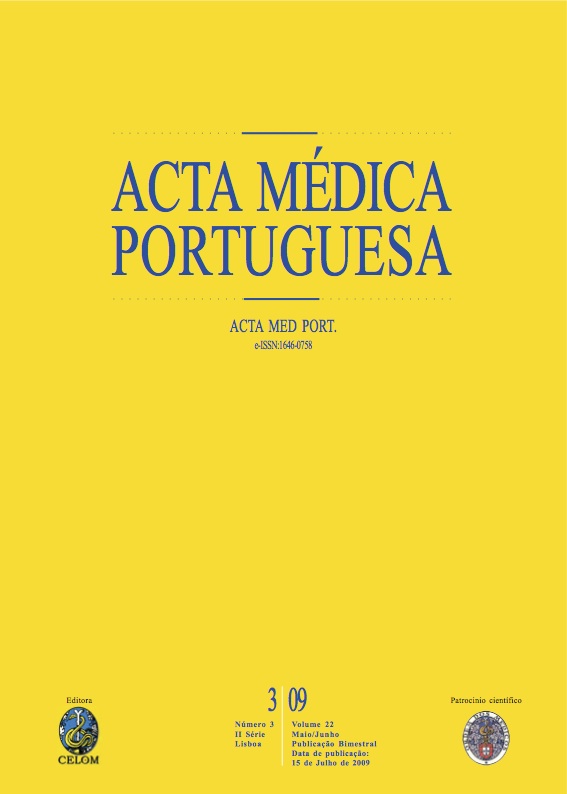Urinary tract infections characterization in a spinal cord injury rehabilitation unit.
DOI:
https://doi.org/10.20344/amp.1703Abstract
Urinary tract infection (UTI) is a common problem among patients with spinal cord injury (SCI) accounting for 50% of nosocomial infections in some international studies. There are several risk identified like: increased residual urine and bladder pressure, bladder overfilled and catheter use. Protocols for UTI's diagnosis and management, used in our Unit, are based on criteria for bladder dysfunction of the National Institute of Disability and Rehabilitation Research (NIDRR).Identify and characterize the bacterial spectrum and susceptibility to antibiotics; determinate the infection frequency according to voiding method and American Spinal Injury Association (ASIA) classification; check the possibility of cross infections between inpatients.158 urine samples were obtained and microbiologically evaluated from 27 inpatients (10 woman and 17 men) during 19 consecutive weeks. Mean age of the patients was 46 years old; 10 could void spontaneously, 9 used indwelling urethral catheters and 8 intermittent catheterization.The most common bacteria were E. coli (49%) and Klebsiella (22%). Most of the agents were more sensitive to Amoxicilin than Fluoroquinolones. We found 24,6% of UTI's in our patients with spinal cord injury, mainly in the ones using a catheterization technique. Patients in indwelling catheterization had a higher number of UTI's than those with intermittent catheters. No definite cross infections could be found.E. coli continues to be the most frequent bacteria causing this infection. Fluoroquinolones resistance is rising. Amoxicilin/Clavulanic acid is an alternative for immediate empiric treatment. Intermittent catheterization is the best method of bladder management since most of the UTI's were found in patients with indwelling catheters. ASIA D spontaneously voiding patients were the ones with fewer infections. Asymptomatic bacteriúrias should not be treated since we observed a weekly change in microbiological studies of 47% without any therapeutic intervention The small number of UTI's, compared to other SCI Rehabilitation Units, may be due to the strictly fulfilment of the hospital infection preventive program. Moreover, the care given to prompt identification and surveillance of the neurogenic bladder seems to be crucial to prevention and management of UTI's.Downloads
Downloads
How to Cite
Issue
Section
License
All the articles published in the AMP are open access and comply with the requirements of funding agencies or academic institutions. The AMP is governed by the terms of the Creative Commons ‘Attribution – Non-Commercial Use - (CC-BY-NC)’ license, regarding the use by third parties.
It is the author’s responsibility to obtain approval for the reproduction of figures, tables, etc. from other publications.
Upon acceptance of an article for publication, the authors will be asked to complete the ICMJE “Copyright Liability and Copyright Sharing Statement “(http://www.actamedicaportuguesa.com/info/AMP-NormasPublicacao.pdf) and the “Declaration of Potential Conflicts of Interest” (http:// www.icmje.org/conflicts-of-interest). An e-mail will be sent to the corresponding author to acknowledge receipt of the manuscript.
After publication, the authors are authorised to make their articles available in repositories of their institutions of origin, as long as they always mention where they were published and according to the Creative Commons license.









